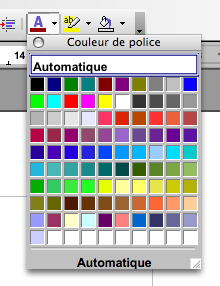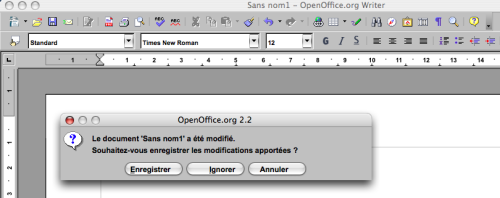The report Merit (287 pages The PDF document) for the European Commission points out the force of FLOSS (Free/Libre/Open Source Software) in Europe. This report is based on numerous study concerning FLOSS (part in companies, contributors, benefits for administrations or companies ....). The software value is estimated to about 2 billion euros available to economic actors. It favors the creation of Small and Medium Companies, and so of jobs. It also enables companies to make some saving of money in R&D.
The report also points out that Europe is the continent which has the most commits, the most FOSS developers and leaders.

The report also talks about OpenOffice.org.
Indeed, it points out that Openoffice.org is used by 21.5% of European public bodies (page 29).
On page 30-31,
Table 1 shows the shares of respondents using specific applications by country. It is
clear that Mozilla/Firefox is among the most popular FLOSS applications, while a significant
share of respondents especially in Latin America uses OpenOffice and the database
applications MySQL or PostgreSQL.

On page 102:
The results of this time-use analysis has show that no statistically significant variation
in productivity measured in number of document processed per day and average effort per
document has been found over a period of 32 weeks between two randomised groups of
users, one to whom OpenOffice was introduced, and one that kept using Microsoft Office.
This is perhaps surprising, since users were not previously familiar with OpenOffice. Indeed,
the group of users was also asked whether as a result of the experimentation they thought
they could do with OpenOffice the same amount of work they could do with Microsoft
Office. As shown in Figure 46, under 10% of respondents thought they could not, more than
20% thought they definitely could perform as well with OpenOffice, while almost 60%
thought they could be as productive with OpenOffice (as confirmed by the time-use analysis)
though with some problems. Given their previous lack of experience with OpenOffice the
fact that problems were subjectively perceived is unsurprising, but the fact that objectively
the productivity of users remained the same and did not reduce is important.

On page 244, there's also accounts of migrations from MSOffice to OpenOffice. Here's a quote from the conclusion of this case study:
There is also no evidence that using OOo may cause additional costs to the organizations
as the pattern of use of OOo is similar to the one of MSO, in term of daily documents
worked and average time spent on them.
The report concludes about OpenOffice (page 283):
OpenOffice.org has all the functionalities that public offices need to create
documents, spreadsheets, and presentations
[...]
OpenOffice.org is free, extremely stable, and supports the ISO Open Document
Standard.
[...]
In our study the motivations to transit to OSS are: the exchange of documents in an
open shared format (ODS), reuse of old hardware in some cases, and being independent of
software vendors even when creating a distribution or an application for local needs.
[...]
It is not always justified to base the migration on the promise of lower license costs,
although in our study initial purchasing costs are lower for the OSS
[...]
There are no extra costs due to lack of productivity arising from the use of the OOo.
This report is a great document and can be interesting for companies or administrations which plan to migrate to FLOSS (and so to OpenOffice), as it is based on real examples of migrations.
French links about this report:


















